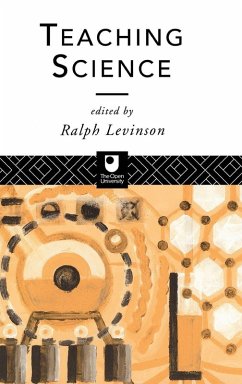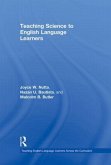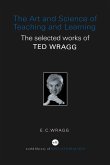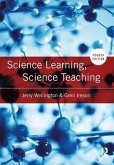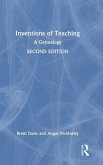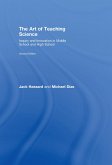Teaching Science
Herausgeber: Levinson, Ralph
Teaching Science
Herausgeber: Levinson, Ralph
- Gebundenes Buch
- Merkliste
- Auf die Merkliste
- Bewerten Bewerten
- Teilen
- Produkt teilen
- Produkterinnerung
- Produkterinnerung
The articles collected together here examine the theories now used to explain how children learn science and how those theories can be translated into effective and stimulating teaching.
Andere Kunden interessierten sich auch für
![Teaching Science to English Language Learners Teaching Science to English Language Learners]() Joyce NuttaTeaching Science to English Language Learners185,99 €
Joyce NuttaTeaching Science to English Language Learners185,99 €![Discourse Strategies for Science Teaching and Learning Discourse Strategies for Science Teaching and Learning]() Kok-Sing TangDiscourse Strategies for Science Teaching and Learning168,99 €
Kok-Sing TangDiscourse Strategies for Science Teaching and Learning168,99 €![A Practical Guide to Educating Learners with Down Syndrome A Practical Guide to Educating Learners with Down Syndrome]() Rhonda M. FaragherA Practical Guide to Educating Learners with Down Syndrome149,99 €
Rhonda M. FaragherA Practical Guide to Educating Learners with Down Syndrome149,99 €![The Art and Science of Teaching and Learning The Art and Science of Teaching and Learning]() E. C. WraggThe Art and Science of Teaching and Learning178,99 €
E. C. WraggThe Art and Science of Teaching and Learning178,99 €![Science Learning, Science Teaching Science Learning, Science Teaching]() Jerry WellingtonScience Learning, Science Teaching214,99 €
Jerry WellingtonScience Learning, Science Teaching214,99 €![Inventions of Teaching Inventions of Teaching]() Brent DavisInventions of Teaching159,99 €
Brent DavisInventions of Teaching159,99 €![The Art of Teaching Science The Art of Teaching Science]() Jack HassardThe Art of Teaching Science202,99 €
Jack HassardThe Art of Teaching Science202,99 €-
-
-
The articles collected together here examine the theories now used to explain how children learn science and how those theories can be translated into effective and stimulating teaching.
Produktdetails
- Produktdetails
- Verlag: Routledge
- Seitenzahl: 226
- Erscheinungstermin: 14. Dezember 2016
- Englisch
- Abmessung: 240mm x 161mm x 17mm
- Gewicht: 508g
- ISBN-13: 9781138176874
- ISBN-10: 1138176877
- Artikelnr.: 71795761
- Herstellerkennzeichnung
- Libri GmbH
- Europaallee 1
- 36244 Bad Hersfeld
- gpsr@libri.de
- Verlag: Routledge
- Seitenzahl: 226
- Erscheinungstermin: 14. Dezember 2016
- Englisch
- Abmessung: 240mm x 161mm x 17mm
- Gewicht: 508g
- ISBN-13: 9781138176874
- ISBN-10: 1138176877
- Artikelnr.: 71795761
- Herstellerkennzeichnung
- Libri GmbH
- Europaallee 1
- 36244 Bad Hersfeld
- gpsr@libri.de
Ralph Levinson
General introduction Part 1: The Science Curriculum: where from, where to?
1. The laboratory comes of age 2. Why the science curriculum changes Part
2: A picture of reality 3. Children's beliefs and classroom learning 4.
Teaching about electric circuits: a constructivist approach 5. Pause for
thought Part 3: The art of teaching in the science curriculum (and some
practical ideas) 6. 'Well Mary, what are they saying here?' 7. Group
discussions in the classroom 8. Chemical compositions 9. A variety of
methods 10. Developing pupils' skills 11. Something to mop up with Part 4:
Assessment: a way through 12. Assessing and evaluating in science education
Part 5: Making science accessible to all 13. Gender differences in pupils'
reaction to practical work 14. Teaching Chemistry to pupils for whom
English in a second language part 6: Science education: a debate 15:
Redefining and orientating practical work in school science 16. What is
scientific method and can it be taught? 17. Practical work in science - a
task-based approach 18. The overselling of science education in the
eighties
1. The laboratory comes of age 2. Why the science curriculum changes Part
2: A picture of reality 3. Children's beliefs and classroom learning 4.
Teaching about electric circuits: a constructivist approach 5. Pause for
thought Part 3: The art of teaching in the science curriculum (and some
practical ideas) 6. 'Well Mary, what are they saying here?' 7. Group
discussions in the classroom 8. Chemical compositions 9. A variety of
methods 10. Developing pupils' skills 11. Something to mop up with Part 4:
Assessment: a way through 12. Assessing and evaluating in science education
Part 5: Making science accessible to all 13. Gender differences in pupils'
reaction to practical work 14. Teaching Chemistry to pupils for whom
English in a second language part 6: Science education: a debate 15:
Redefining and orientating practical work in school science 16. What is
scientific method and can it be taught? 17. Practical work in science - a
task-based approach 18. The overselling of science education in the
eighties
General introduction Part 1: The Science Curriculum: where from, where to?
1. The laboratory comes of age 2. Why the science curriculum changes Part
2: A picture of reality 3. Children's beliefs and classroom learning 4.
Teaching about electric circuits: a constructivist approach 5. Pause for
thought Part 3: The art of teaching in the science curriculum (and some
practical ideas) 6. 'Well Mary, what are they saying here?' 7. Group
discussions in the classroom 8. Chemical compositions 9. A variety of
methods 10. Developing pupils' skills 11. Something to mop up with Part 4:
Assessment: a way through 12. Assessing and evaluating in science education
Part 5: Making science accessible to all 13. Gender differences in pupils'
reaction to practical work 14. Teaching Chemistry to pupils for whom
English in a second language part 6: Science education: a debate 15:
Redefining and orientating practical work in school science 16. What is
scientific method and can it be taught? 17. Practical work in science - a
task-based approach 18. The overselling of science education in the
eighties
1. The laboratory comes of age 2. Why the science curriculum changes Part
2: A picture of reality 3. Children's beliefs and classroom learning 4.
Teaching about electric circuits: a constructivist approach 5. Pause for
thought Part 3: The art of teaching in the science curriculum (and some
practical ideas) 6. 'Well Mary, what are they saying here?' 7. Group
discussions in the classroom 8. Chemical compositions 9. A variety of
methods 10. Developing pupils' skills 11. Something to mop up with Part 4:
Assessment: a way through 12. Assessing and evaluating in science education
Part 5: Making science accessible to all 13. Gender differences in pupils'
reaction to practical work 14. Teaching Chemistry to pupils for whom
English in a second language part 6: Science education: a debate 15:
Redefining and orientating practical work in school science 16. What is
scientific method and can it be taught? 17. Practical work in science - a
task-based approach 18. The overselling of science education in the
eighties

